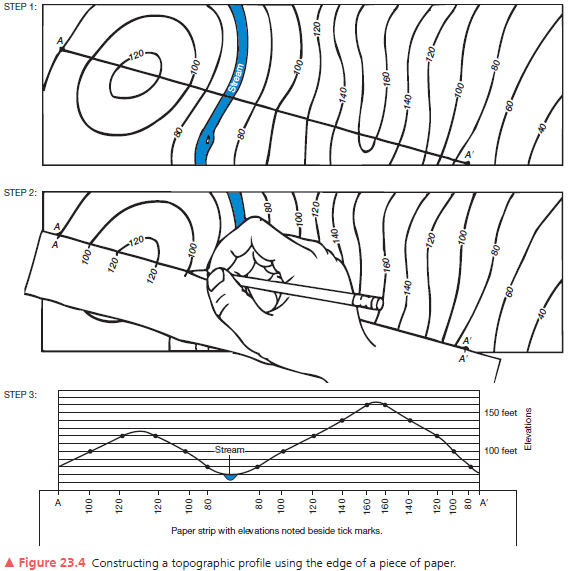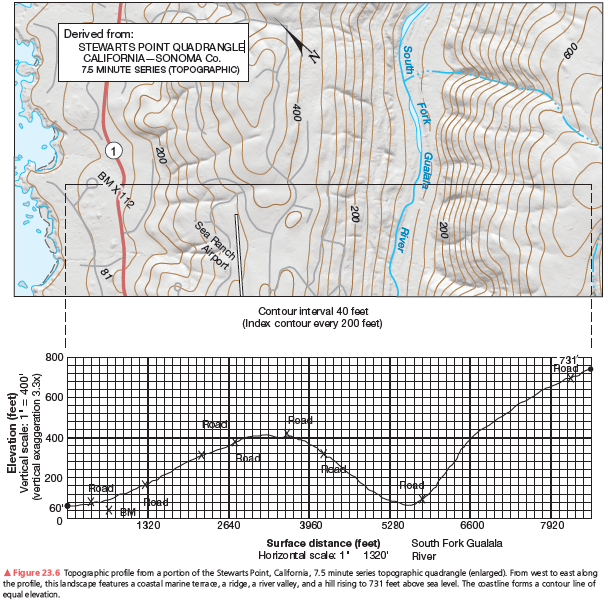The most violent volcanic activity is associated with ________
A) the Mid-Atlantic Ridge
B) composite volcanoes
C) cinder cones
D) shield volcanoes
Answer: B
You might also like to view...
After you complete the topographic profile you’ll notice a marine terrace, a relatively flat platform or “shelf,” along the coast. You can find where the marine terrace ends by looking along the topographic profile for where the slope changes from flat to steeper. What contour elevation marks this change from the marine terrace to the hills inland? How wide is this terrace from the coast line to that contour line elevation in feet?
A second example of a vertical profile is in Figure 23.6. Using the same procedure as you did on the previous assignment, construct a topographic profile. Label the South Fork of the Gualala River (see Figure 23.4, Step 3), the bench mark at 112 feet, and various road crossings on your profile. The coastline forms a contour line of equal elevation—sea level. Note the change in contour interval and scale from that of Figure 23.5. Use Figure 23.6 to answer further questions about preparing a topographic profile.



Below the calcium carbonate compensation depth (CCD) sediment composed of ________ will dissolve
a. silica b. diatom remains c. iron d. calcium carbonate
Which of the following is obtained as a result of the complete hydrolysis of starch?
A) D-glucose B) lactose C) maltose D) sucrose
Which of the following correctly matches the tectonic setting of a mountain belt with an example?
A. continental collision-Andes Mountains B. mantle upwelling-Tibet C. subduction zone-East Africa D. All of these choices are correct. E. None of these choices are correct.